Monarch butterflies rely on a continuous supply of fresh milkweed leaves as they migrate northward from their overwintering grounds in Mexico — or California — each spring. As more and more citizens have become concerned about the status of monarch butterflies, gardeners, landowners, municipalities and organic farmers have picked up the torch and are leading the conservation effort for this emblematic butterfly by planting milkweeds, and native nectar plants for the adult butterflies.
Although there are a number of milkweed species in North America that the monarch butterfly uses as a larval host plant, common milkweed (
Asclepias syriaca) is one of the preferred milkweed species that the females seek out for laying eggs upon. The downside to growing this attractive milkweed in a small space is that it can spread aggressively by rhizomes, and for the uninitiated gardener this may come as quite a surprise. But there are a number of opportunities to include this native milkweed species in selective small spaces or large gardens or properties. You will be rewarded with possibly observing not only both monarch adults and caterpillars but also a number of flower-visiting insects and insects that also specialize on feeding on milkweed plants. If you want to make some new insect friends, plant milkweed.
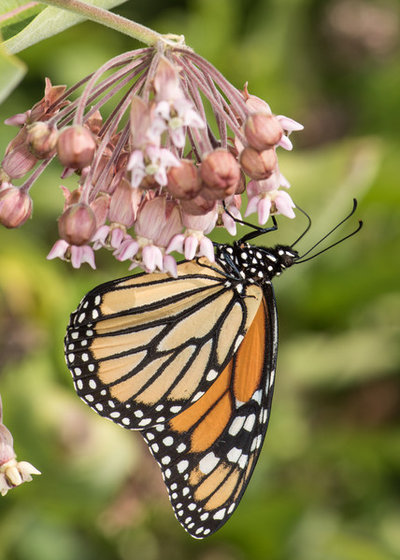
Holm Design & Consulting LLC
Botanical name: Asclepias syriacaCommon name: Common milkweed
Origin: Native to central and eastern North America from North Dakota southward to Oklahoma, and eastward to northern Georgia in the south and Maine in the north; in Canada, common milkweed occurs from Saskatchewan eastward to Nova Scotia
Where it will grow: Hardy to minus 40 degrees Fahrenheit, or minus 40 degrees Celsius (USDA zones 3 to 6; find your zone)
Typical plant communities: Dry prairies, roadsides, railway right-of-ways, old fields and woodland edges
Water requirement: Water new plants weekly until established; after establishment, no watering is required if planted in average soil; they prefer dry-mesic to mesic-moist, sandy loam to clay-loam soil.
Light requirement: Full sun
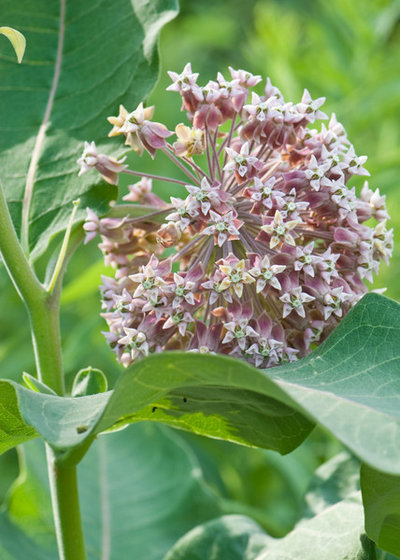
Holm Design & Consulting LLC
Mature size: 2 to 3 feet tall and 1 foot wide
Benefits and tolerances: Tolerates most soil types; attracts butterflies and a wide range of insects; larval host plant for monarch butterflies
Seasonal interest: Large, pink spherical flower heads open in late June or early July through August; large, bright green leaves
When to plant: Spring or fall; potted plants and seeds are available from most native-plant nurseries in areas where it occurs
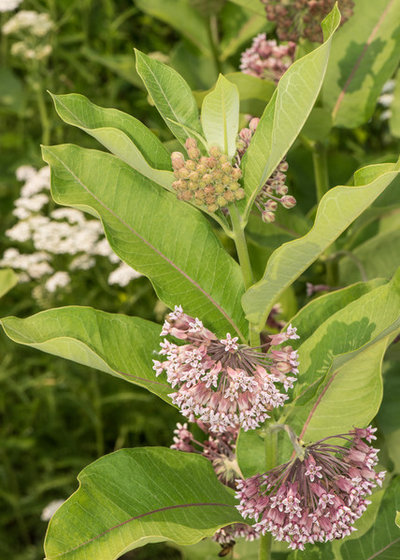
Holm Design & Consulting LLC
Distinguishing traits. Common milkweed has large leaves, an upright form and extremely fragrant flowers. Attractive seedpods develop in early September and persist into late fall after they have opened and released their seeds.
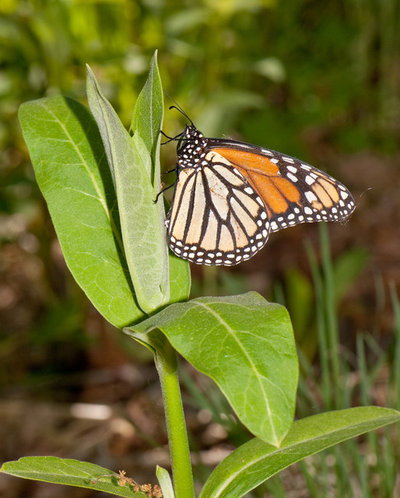
Holm Design & Consulting LLC
A female monarch butterfly lays eggs on the underside of common milkweed leaves.How to use it. Common milkweed spreads by rhizomes and can be a very aggressive plant in rich soil. It is, therefore, suitable only for medium or large gardens or for select small spaces. If you have an informal perennial garden, you can use this native plant near the middle of the border, where it will grow alongside and weave around plants of similar height. An alleyway or a narrow strip along a garage or house foundation is also a good site for common milkweed.
Combine common milkweed with other native perennials, including common yarrow (
Achillea millefolium), wild bergamot (
Monarda fistulosa) and smooth oxeye (
Heliopsis helianthoides).
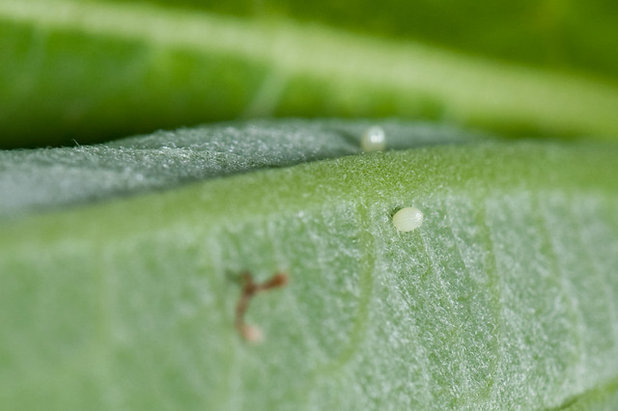
Holm Design & Consulting LLC
Two monarch eggs on the underside of a common milkweed leafPlanting notes. This is a rhizomatous plant and spreads by forming small to large colonies. It tends to be short-lived in dry, sandy sites.
Collect seeds from the pods in late September just after the pods begin to open. The seeds can be stored in a cool, dry place for the winter. Thirty days prior to sowing them in pots or outdoors in spring, mix the seeds with dampened sand and place them in a container in the fridge.
How to gather, store and use wildflower seeds from your garden
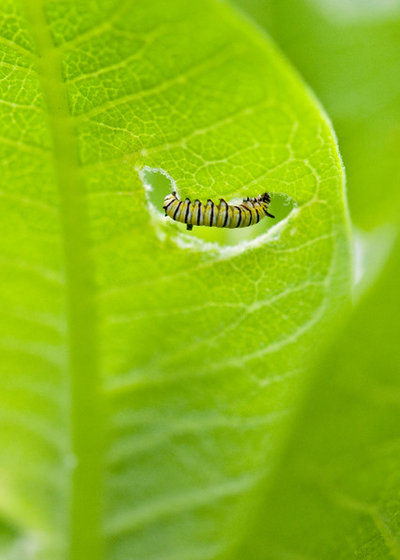
Holm Design & Consulting LLC
A monarch caterpillar feeding on a common milkweed leafPollinator notes. Milkweeds attract a large number of insects, including beetles, true bugs and moth and butterfly caterpillars that specialize on feeding on some part of the plant, whether it’s the foliage or the seeds. These insects have the ability to metabolize and sequester toxic compounds in milkweed plants. These compounds help protect these insects from predation.
Pollinating insects that visit the flowers for nectar include solitary and social wasps, bees, flies, beetles, butterflies and moths.
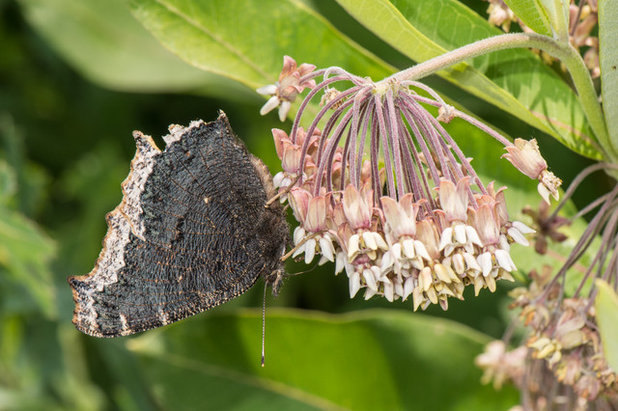
Holm Design & Consulting LLC
A mourning cloak butterfly visiting the flowers for nectarThis is a larval host plant for monarch butterflies, and a small colony of this plant can provide an adequate supply of larval food for their caterpillars. The caterpillars prefer to feed on the new growth or leaves that are tender. Adult monarch butterflies regularly visit the flowers for nectar.
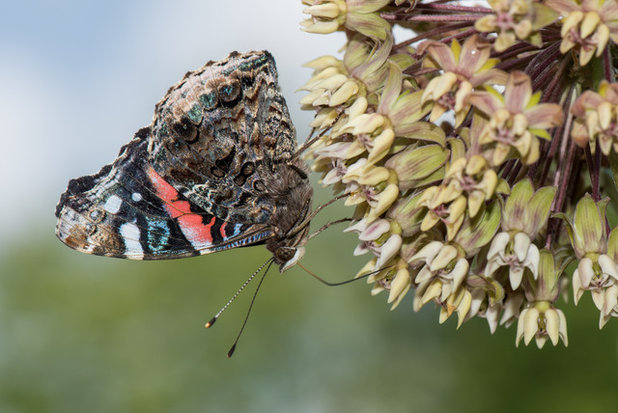
Holm Design & Consulting LLC
A red admiral butterfly drawing nectar from the flowers
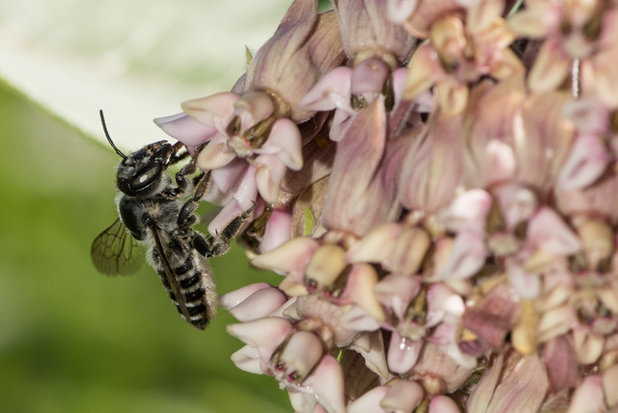
Holm Design & Consulting LLC
A female leafcutter bee (Megachile sp.) visiting common milkweed flowers
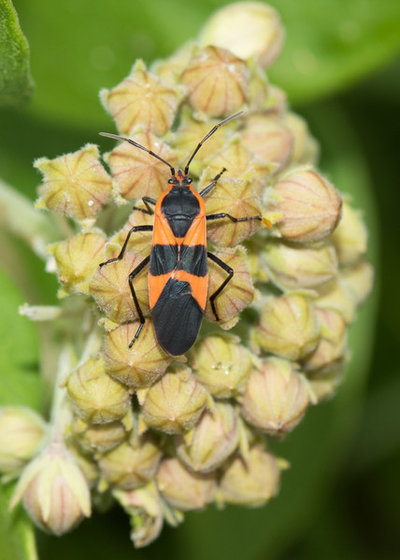
Holm Design & Consulting LLC
Here we see a large adult milkweed bug (
Oncopeltus fasciatus) sitting on a developing flower head. These bugs feed on the plant’s sap as well as the seeds but aren’t considered beneficial.





